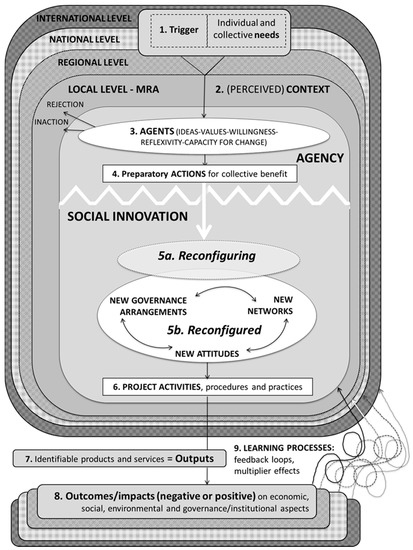Source >>>
by  Robert Lukesch 1,
Robert Lukesch 1, Alice Ludvig 2,
Alice Ludvig 2, Bill Slee 3,
Bill Slee 3, Gerhard Weiss 2,* and
Gerhard Weiss 2,* and Ivana Živojinović 21ÖAR GmbH, Hirzenriegl 55, A-8350 Fehring, Austria2Institute of Forest, Environmental and Natural Resource Policy, University of Natural Resources and Life Sciences, Vienna (BOKU) and European Forest Institute, Forest Policy Research Network, Feistmantelstrasse 4, A-1180 Vienna, Austria3The Rural Development Company, 4 Manse Lane Tannadice, Forfar DD8 3TA, UK*Author to whom correspondence should be addressed.Sustainability2020, 12(18), 7407; https://doi.org/10.3390/su12187407Received: 1 August 2020 / Revised: 28 August 2020 / Accepted: 3 September 2020 / Published: 9 September 2020(This article belongs to the Special Issue Impact of Social Innovation on Sustainable Development of Rural Areas)View Full-TextDownload PDFBrowse FiguresCite This Paper
Ivana Živojinović 21ÖAR GmbH, Hirzenriegl 55, A-8350 Fehring, Austria2Institute of Forest, Environmental and Natural Resource Policy, University of Natural Resources and Life Sciences, Vienna (BOKU) and European Forest Institute, Forest Policy Research Network, Feistmantelstrasse 4, A-1180 Vienna, Austria3The Rural Development Company, 4 Manse Lane Tannadice, Forfar DD8 3TA, UK*Author to whom correspondence should be addressed.Sustainability2020, 12(18), 7407; https://doi.org/10.3390/su12187407Received: 1 August 2020 / Revised: 28 August 2020 / Accepted: 3 September 2020 / Published: 9 September 2020(This article belongs to the Special Issue Impact of Social Innovation on Sustainable Development of Rural Areas)View Full-TextDownload PDFBrowse FiguresCite This Paper
Abstract
Political frameworks and policies have a strong influence on the institutional ecosystem and on governance patterns, which in turn shape the operational space of civil society initiatives. This article aims to explore the social and institutional conditions and policy initiatives that foster or hinder social innovation and the pathways leading from social innovation to institutional change through to actual impacts on policies and political frameworks, in order to understand how policymakers can encourage and enable social innovation. The article builds on an extensive empirical background to develop a heuristic model to facilitate decision making for a policy environment propitious for the emergence of social innovation. The resulting model sets up a triadic configuration of (i) a committed core of key actors, (ii) the benevolent shadow of hierarchy represented by public actors, and (iii) multifunctional and malleable intermediary support structures for a successful development of social innovation initiatives. The model is discussed and validated by reference to three in-depth case studies from differing institutional settings. We conclude that policy should recognize that social innovation will achieve most when the triadic relationships between the state, intermediary organizations, and local actors are working together synergistically. View Full-TextKeywords: civil society actors; governance; policy impact; rural areas; Europe▼ Show Figures


Figure 1This is an open access article distributed under the Creative Commons Attribution License which permits unrestricted use, distribution, and reproduction in any medium, provided the original work is properly cited

